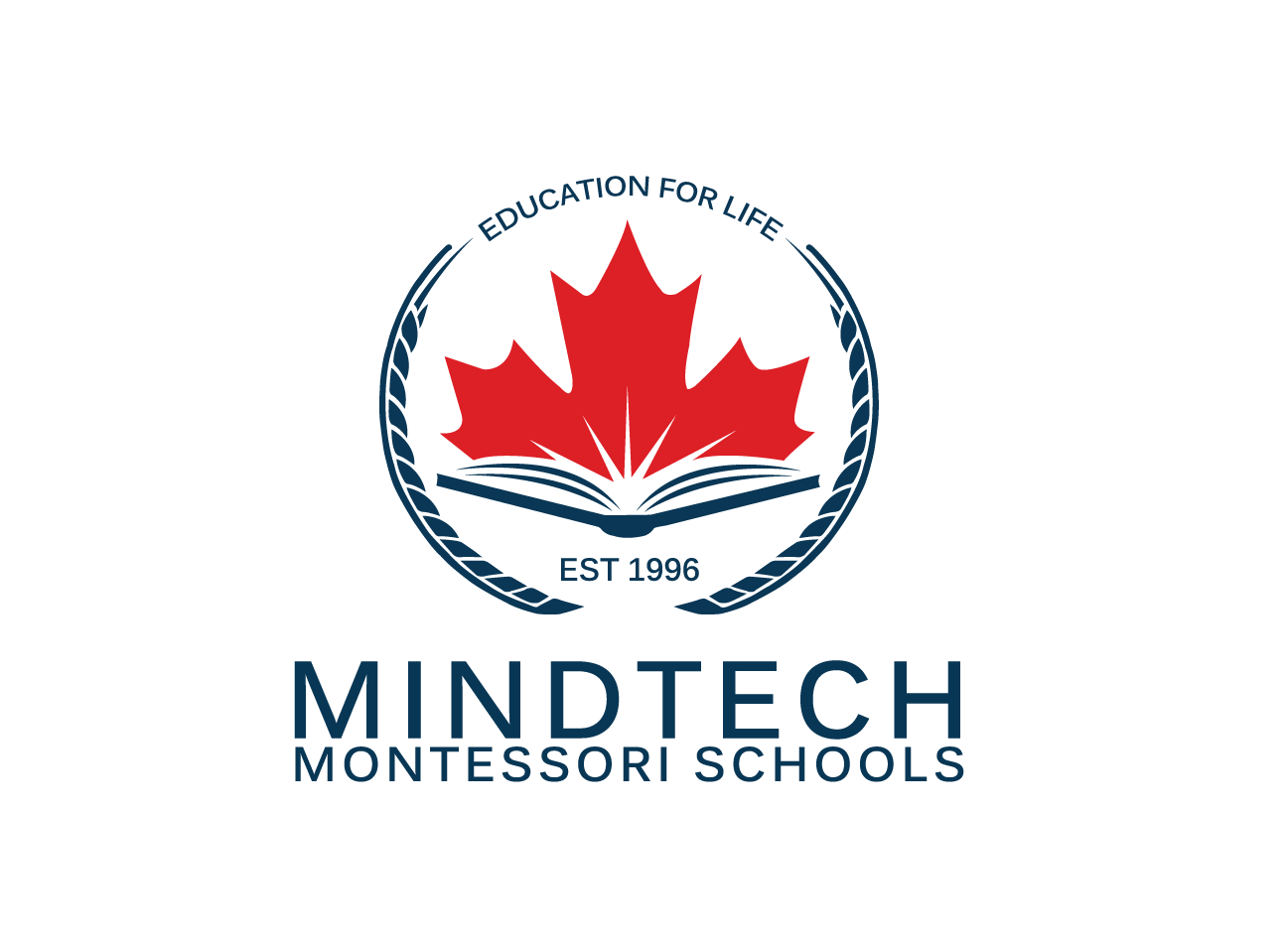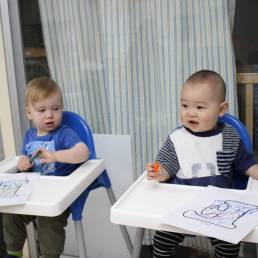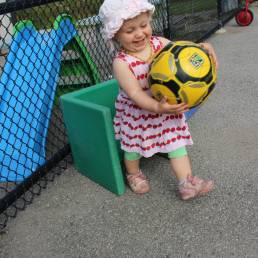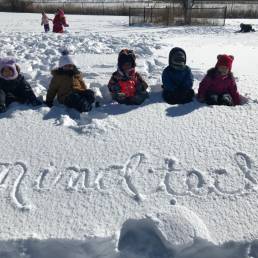CASA MONTESSORI PROGRAM
(2.5 TO 6 YEARS)
Since a child retains this ability to learn by absorbing until he is almost seven years old, Dr. Montessori reasoned that his experience should be enriched by a classroom where he could handle materials which would demonstrate basic educational information to him. Over sixty years of experience have proven her theory that a young child can learn to read, write and calculate in the same natural way that he learns to walk and talk. In a Montessori classroom the equipment invites him to do this at his own periods of interest and readiness.
Dr. Montessori always emphasized that the hand is the chief teacher of the child. In order to learn there must be concentration, and the best way a child can concentrate is by fixing his attention on some task he is performing with his hands. (The adult habit of doodling is remnant of this practice.) All the equipment in a Montessori classroom allows the child to reinforce his casual impressions by inviting him to use his hands for learning.
Sensitive Periods
Another observation of Dr. Montessori’s, which has been reinforced by modern research, is the importance of the sensitive periods for early learning. These are periods of intense fascination for learning a particular characteristic or skill, such as going up and down steps, putting this in order, counting or reading. It is easier for the child to learn a particular skill during the corresponding sensitive period than at any other time in her life. The Montessori classroom takes advantage of this fact by allowing the child freedom to select individual activities which correspond to her own periods of interest.
Montessori Education – A Brief History
Montessori education is a system for the education of children from birth through age 18. It is based upon principles developed by Dr. Montessori of materials, educational techniques, and observation which support the natural development of children. The teacher in a Montessori classroom serves less as an “instructor” and more as a guide and facilitator. Children are encouraged to “learn how to learn”, thus gaining independence and self-confidence. Because the method is based upon developmentally appropriate activities, the child learns through the process of education – by doing.
The Montessori school is designed to accommodate various stages of development in children, which occur in roughly 3-year cycles. From birth to 2½ years of age the child is absorbing directly from the environment, almost as a sponge. It is during this phase that many language and motor skills are acquired without formal instruction.
During the second phase from 2½ to 6 years of age, the child reaches a different stage in which repetition and manipulation of the environment are critical to the development of concentration, coordination, independence, and a sense of order. The child learns skills for everyday living, sorting, grading, classifying-all of which lead to the development of writing, reading, and a mathematical mind.
The Montessori curriculum pays attention to practical life skills. Montessori students acquire these skills repeating the following exercises many times;
- Caring for plants
- Cleaning up spills
- Polishing shoes
- Setting the dinner table
- Fastening clothes
- Washing hands
- Using scissors/tweezers/tongs
- Washing linen
- Dressing frames
These exercises offer the child the means of caring for himself and his environment. As well, they build confidence in the young child and allow his independent nature to flourish. MindTech Montessori teachers encourage the children to form gracious and courteous habits – and to be respectful of others and of their environment. These activities provide the base on which the children approach more intricate academic exercises.
In the Montessori classroom, sensorial materialsplay a key role. They are designed to sharpen the sense of the young child. Further, they enable the child to understand the many impressions received through the sense.
Each of the sensorial materials isolates one defining quality, such as;
- Colour
- Weight
- Shape
- Texture
- Size
- Sound
- Smell
Sound boxes, for example are all the same size, shape, color, and texture; they differ only in the sounds which are made when a child shakes them. Other sensorial materials include:
- Geometric solids
- Fabrics
- Square Pythagoras
- Colour tables
- Temperature bottles
- Cyclinder blocks
The Montessori sensorial materials help the child to distinguish, categorize, and relate new information to what he already knows. The child finds a sense of order in these materials. More importantly, he discovers the joy of learning that his environment has order. His intellect is trained to make order out of a multitude of experiences— this is the natural learning process.
Language development is linked with sensory education, one supporting the other. Montessori viewed language as communication incorporating structure, meaning and emotion in the expression of thoughts and experiences. Our language program begins with enrichment of vocabulary. For example, it is not unusual for a child attenting our school to use such words as;
- “Binomial”
- “Geometric”
- “Continent”
- “Obtuse”
- “Conjunction”
Children love beautiful language, and we give them exact terms like these to name their environment and convey their thoughts.
Reading and writing come naturally to the children after they have worked for some time with two special materials:
- Sandpaper Letters (which the children trace and sound phonetically)
- The Movable Alphabet (the formation of words by combining phonetic sounds).
Further, the children work with materials to concretely learn the function of words. Finally, Montessori students experiencing with reading analysis.
At MindTech Montessori School, the child builds an understanding of numbers using concrete materials:
- Number Rods
- Beads
- Cubes
- Number Cards
The children combine, separate, share, count, and compare these concrete materials. Building on this foundation, we guide each child to more abstract mathematical constructions:
- Tables
- Charts
- Arithmetic games
All of the math exercises help the child to an internal grasp of basic mathematical concepts and processes. At this age the children have an extreme sense of order; all of them find mathematics simple, enjoyable, and satisfying.
Cultural Subjects at the Early Childhood level includes Geography, History and Sciences that embrace Botany and Zoology in order to help the young child begin to understand his relationship to all elements and aspects of this world and appreciate his role as a citizen of the Earth.
Through our cultural activities, the children at MindTech Montessori School gain a meaningful, involved acquaintance with:
- Plants
- Animals
- Music
- Basic science concepts
- Art
We introduce geography and earth science through appropriate materials, which the children work with individually and in small groups:
- Jigsaw-puzzle maps
- Model land forms
- Water forms
- Culture pictures
These help the child towards becoming acknowledgeable, compassionate, and loving citizen of the world.
AFTER SCHOOL PROGRAMS
At MindTech learning we offer after-school programs filled with enrichment learning and opportunities
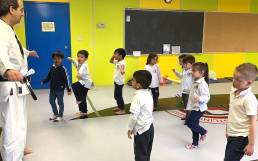
KARATE

BASKETBALL
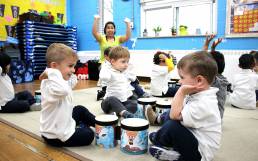
ZUMBINI
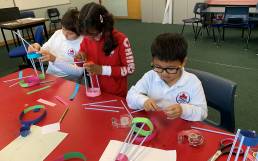
JR. ENGINEERING PROGRAM
My children attended the Dickson Hill campus starting from age 1 all the way to Grade 3 (daughter) and Sr. Casa (son). Both of them had a very fulfilling experience: from a rich academic program, incredibly warm and talented teachers, and various enrichments such as speech arts, skiing, skating and swimming. Today both of them have advanced reading levels, strong mathematical skills, and confidence in public speaking. We are very grateful for the wonderful experience our kids had at MindTech.Mastrofini Family


